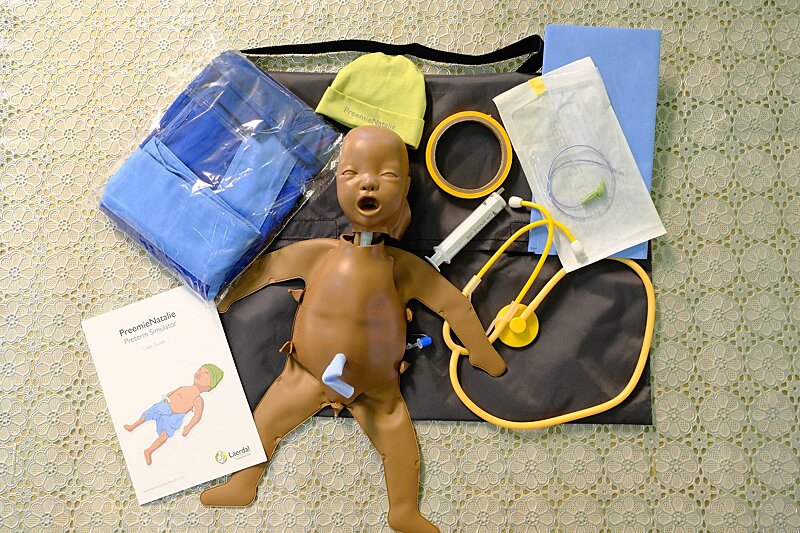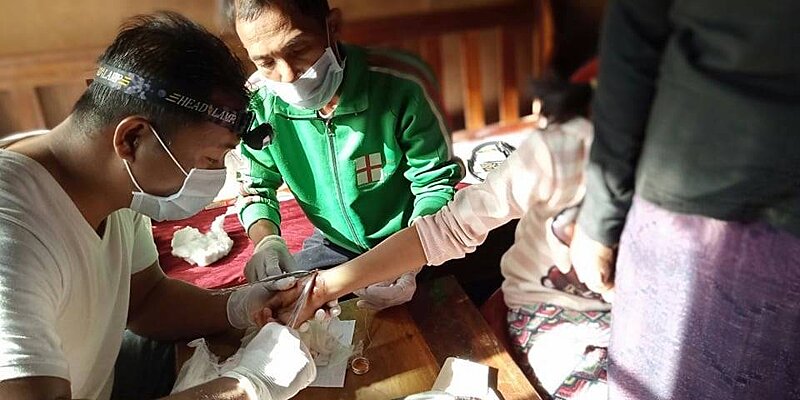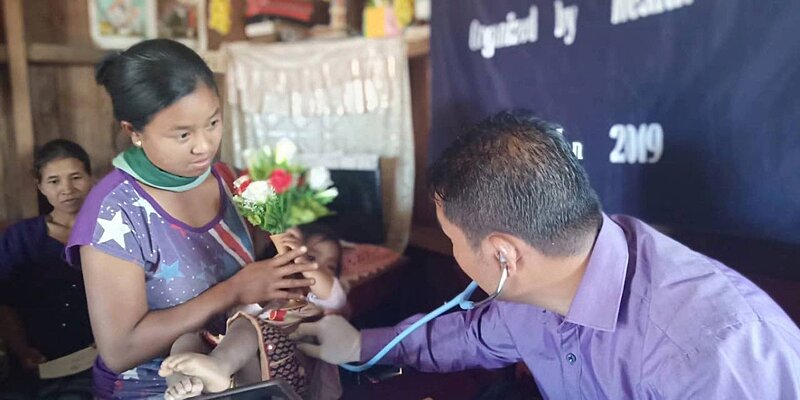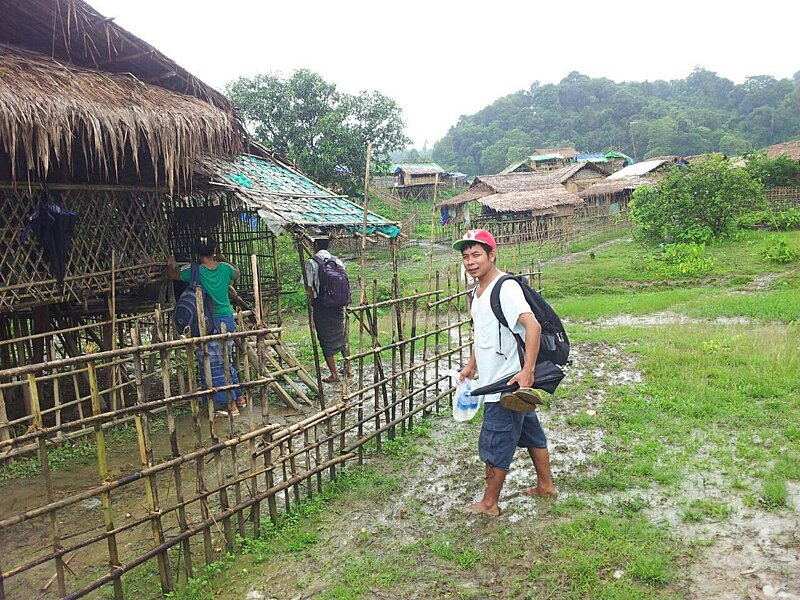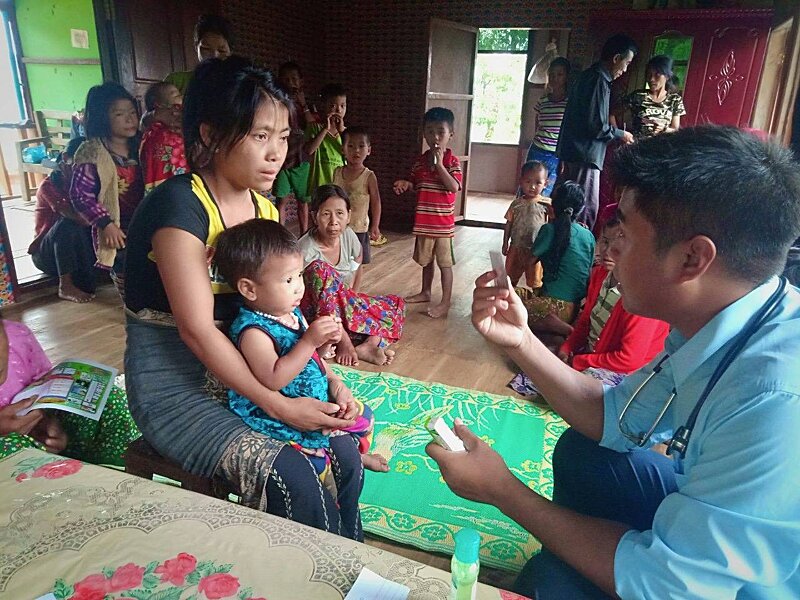Health
Our goal is to improve access to public health and primary medical care in Chin State
Health indicators in Chin State continue to be among the worst in Myanmar. The primary cause of death is from infectious diseases including pneumonia, diarrhoea and malaria – most of which are preventable and treatable. Medicines are scarce and expensive and despite there being numerous health facilities, many are empty and all are understaffed. Due to the distance between villages and towns, patients only travel to a hospital when their deteriorating health conditions are at their worst, with some arriving too late.
The health crisis in Myanmar has been exacerbated by the ongoing effects of the military coup.
Primary Health Care
Our community health projects includes maternal, newborn, and child health, sexual and reproductive health and rights, training for Community Health Workers, mobile clinics, fixed clinics and referral pathways. We target underserved areas and implementation is carried out in collaboration with a network of local partner organisations. Over the last 12 months (2024-25) we have achieved the following:
- 21 individuals were equipped as Community Health Workers Trainers, who then delivered the training to 329 Community Health Workers, each selected from their respective villages.
- Over 7,000 patients have received treatment at the 9 community clinics (fixed clinics).
- Over 4,800 patients were treated through outreach services via mobile clinics.
- Community Health Workers have provided consultations to over 59,000 individuals.
- Over 6,400 children were screened for signs of malnutrition. Among these, 286 children were identified as malnourished and received treatment through the provision of nutritional supplements.
- Over 270 patients were referred to hospitals for secondary-level treatment. Medical and transportation costs were covered to ensure access to appropriate care.
- 843 pregnant women received antenatal care through our fixed clinics.
Community Ambulance
Out of many, one of the biggest problems faced by displaced families is timely access to medical facilities during medical emergencies, childbirth and sickness. Due to their remote location and difficulties in access by road most of the existing medical and ambulance services do not have ability to reach hard to access rural areas. This is particularly relevant for pregnant women who struggle to access antenatal care and supported delivery by appropriately trained clinicians, especially for the communities who often cannot access health care.
Local information has shown that there are no ambulance services available at all in remote areas we serve. In addition, many of the villages are still not accessible by normal vehicles especially during the monsoon except by vehicles which are four-wheel drive (4WD).
Health & Hope have sought to meet this need through establishing a community ambulance service to reach out and respond to medical emergencies in the most remote and isolated locations, where the rest of the medical services are not able to reach.
This will improve the accessiblity of urgent and emergency healthcare for displaced, conflict affected and low resource community populations who are not yet reached by the existing medical and ambulance services. This is due to launch imminently with additional funding.
Our Health projects prior to the military coup
Prior to the military coup, from 2008 to 2021, Health & Hope trained 791 Community Health Workers (CHWs), 32 Area Coordinators (ACs) and 126 Traditional Birth Attendants (TBAs). In addition, 14 local Trainer of Trainers have been trained who have in turn delivered Maternal & Neonatal health training to 101 TBAs in remote villages. This network of locally trained health workers forms part of the community-led response to health challenges across the region, providing support to a population of 150,000 people across 445 partner villages.
Please click the links below to our historic projects:
Summary
Since 2008, Health & Hope have trained 791 Community Health Workers, 32 Area Coordinators and 126 Traditional Birth Attendants. This network of locally trained health workers forms part of the community-led response to health challenges across the region, providing support to a population of 150,000 people across 448 partner villages.
Following on from a pilot project in 2016 in Rakhine and southern Chin States to provide in-situ support to these health workers, this project built upon experience in order to:
- Increase access to health care services through ensuring the network of trained health workers are regularly supported, and receive follow-up training to respond to the changing needs of their local community
- Build capacity of the network of health workers through health education of local communities enabling them to respond better to their own health needs
Challenge
Southern Chin State and northern Rakhine State are two of the most neglected and impoverished regions in Myanmar. The project area is remote and poorly connected to the rest of the country. Villagers from the project area consist of over fifteen different tribal groups, all facing chronic food insecurity, a lack of educational opportunities and poor health outcomes.
This project aimed to address:
- The lack of access and availability to health care services for the rural poor
- The lack of education about health management, sanitation, nutrition, disease prevalence and disease prevention
- The lack of a sustainable solution for providing health care services for the rural poor
- Weaknesses in local drivers for change through engaging communities in self-determined improvements, and influencing government provision of healthcare to rural areas
Solution
At the launch of the 2015 UN Primary Health Care Performance Initiative, WHO Director General Dr. Margaret Chan stated that, “when primary health care works, it can meet the vast majority of people’s health needs”. It has been the long-term belief and experience of Health & Hope that community-owned and led services are the most effective way of improving the health of the rural population in western Myanmar. These services are primarily preventative rather than curative, adopting scientifically sound and culturally appropriate methods of health education.
Health & Hope's community-based model provides regular training for Area Coordinators, who in turn support Community Health Workers in partner villages by giving:
- mentoring support
- peer learning opportunities
- one-to-one health training
- access to medicines
- health education campaign material
- monitoring of health statistics
Funding for this project also meant trained medical staff can receive in-situ training alongside running rural health clinics, in addition to supporting the development of Health & Hope Myanmar's operational capabilities.





